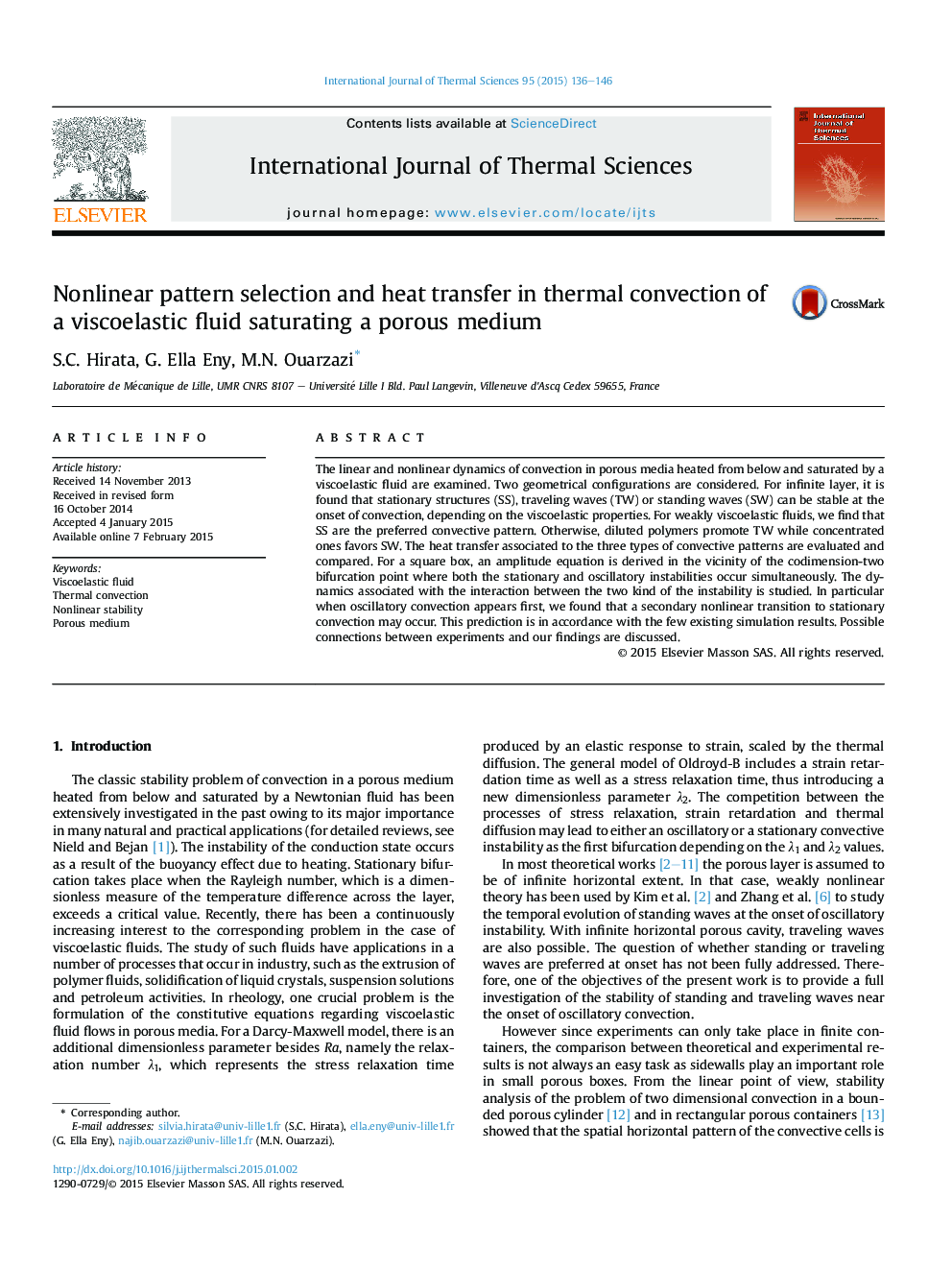| Article ID | Journal | Published Year | Pages | File Type |
|---|---|---|---|---|
| 668034 | International Journal of Thermal Sciences | 2015 | 11 Pages |
•Traveling (standing) waves are preferred for diluted (concentrated) viscoelastic solutions.•Successive bifurcations and phase portrait are described as functions of the rheological parameters.•The predicted bifurcations provide theoretical background to existing numerical and experimental results.
The linear and nonlinear dynamics of convection in porous media heated from below and saturated by a viscoelastic fluid are examined. Two geometrical configurations are considered. For infinite layer, it is found that stationary structures (SS), traveling waves (TW) or standing waves (SW) can be stable at the onset of convection, depending on the viscoelastic properties. For weakly viscoelastic fluids, we find that SS are the preferred convective pattern. Otherwise, diluted polymers promote TW while concentrated ones favors SW. The heat transfer associated to the three types of convective patterns are evaluated and compared. For a square box, an amplitude equation is derived in the vicinity of the codimension-two bifurcation point where both the stationary and oscillatory instabilities occur simultaneously. The dynamics associated with the interaction between the two kind of the instability is studied. In particular when oscillatory convection appears first, we found that a secondary nonlinear transition to stationary convection may occur. This prediction is in accordance with the few existing simulation results. Possible connections between experiments and our findings are discussed.
